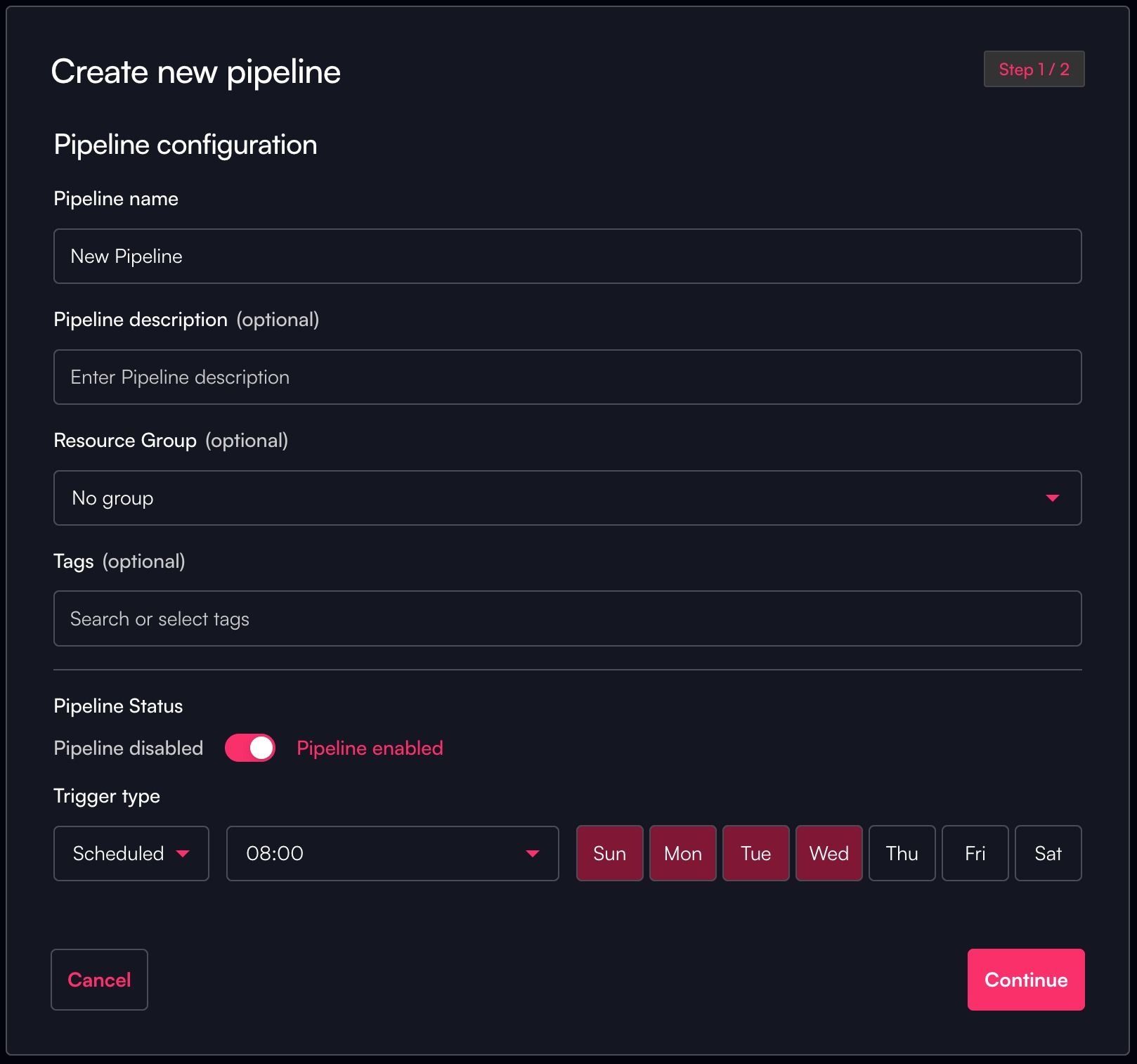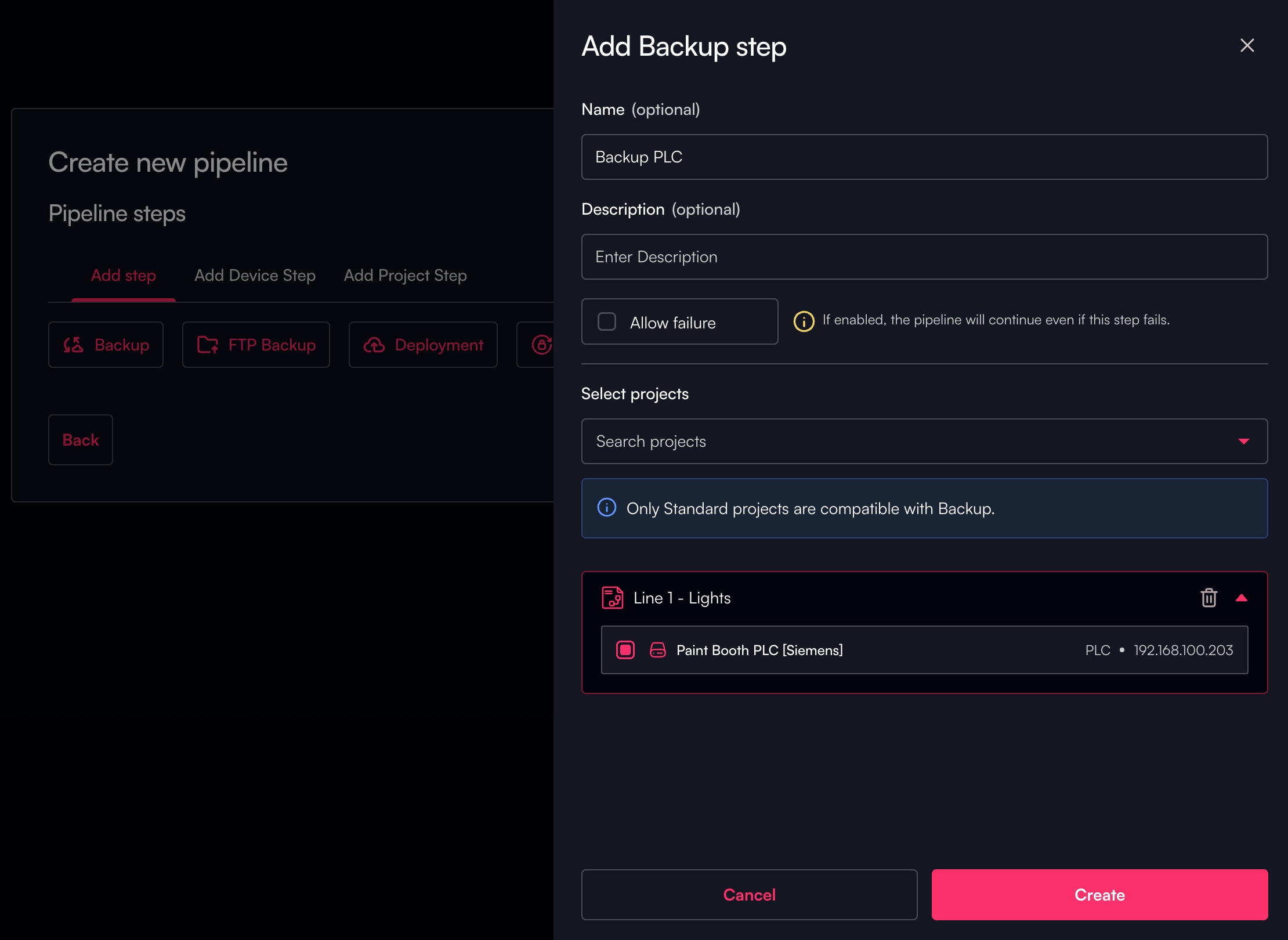Using Pipelines
Overview
Pipelines are automated workflows that allow you to execute a series of operations on your devices and infrastructure. Pipelines can be triggered manually or scheduled to run automatically, enabling you to automate routine tasks like backups, deployments, and device maintenance.
Key Features
Manual Triggers: Execute pipelines on-demand when needed
Scheduled Execution: Set up daily schedules with specific execution times
Multiple Operations: Chain together different operations to create comprehensive workflows
Device Management: Automate device-related tasks like firmware updates and password rotation
Getting Started
Creating Your First Pipeline
Navigate to the Pipelines section in your dashboard
Click the "Add" button in the top right corner

Give your pipeline a descriptive name
Choose your trigger method (Manual or Scheduled)

Add operations to your pipeline

Save and test your pipeline
Trigger Types
Manual Trigger
Manual triggers allow you to execute pipelines on-demand. This is ideal for:
One-time operations
Testing and debugging
Situations requiring immediate execution
Scheduled Trigger
Scheduled triggers run your pipeline automatically on a daily basis. You can:
Set a specific execution time (local time format)
Configure daily recurrence
Monitor execution history
Chaining Multiple Jobs
You can include multiple projects in a single backup step to execute their backups simultaneously in parallel. To run jobs sequentially instead, create separate steps for each project.
Each step includes an "Allow failure" checkbox that determines how the pipeline handles errors. When this option is enabled, the pipeline will continue executing subsequent steps even if the current step fails. When disabled, any failure will halt the entire pipeline execution.
Last updated
